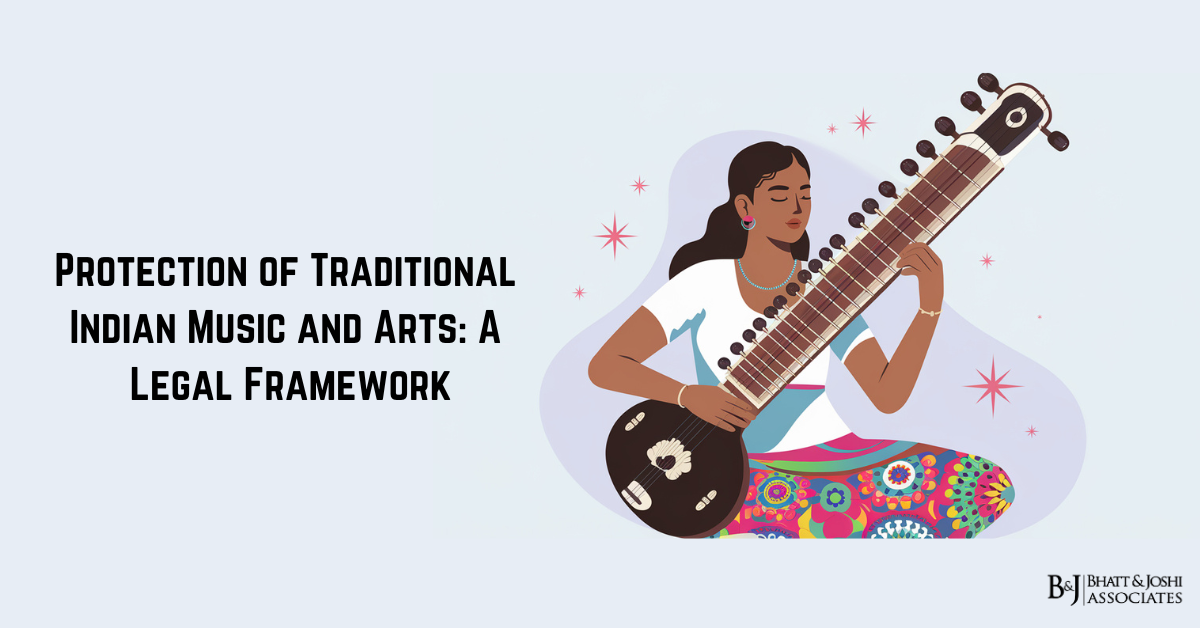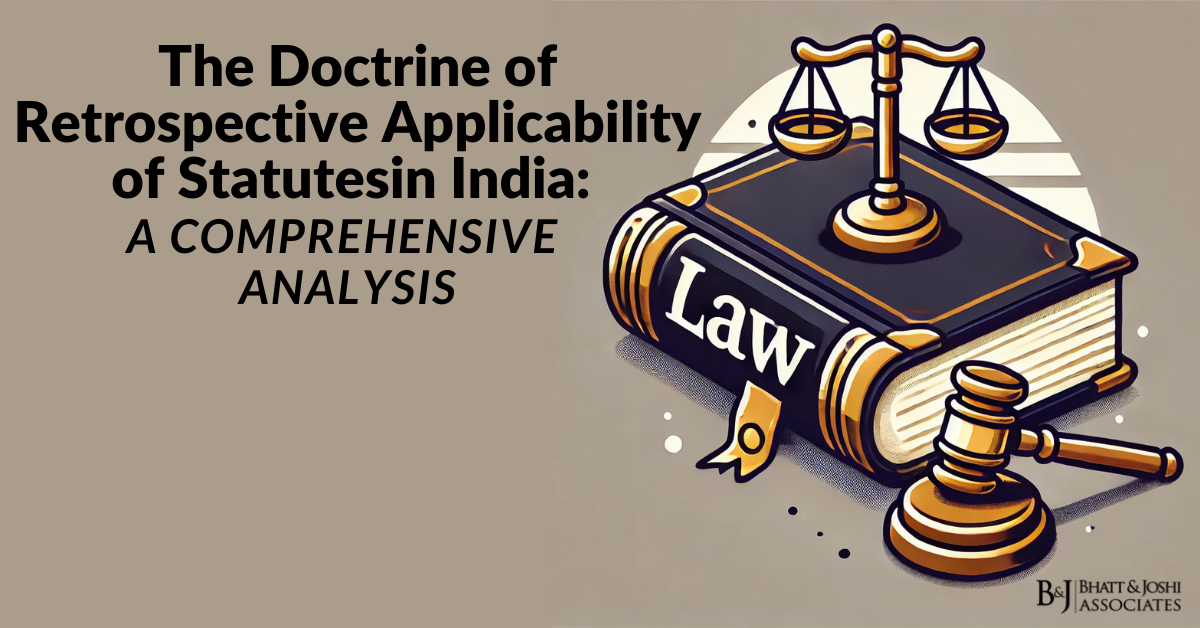Introduction
India’s cultural heritage, particularly its traditional music and arts, is vast and unparalleled. These traditions, deeply rooted in the country’s religious, social, and artistic history, represent both India’s diversity and unity. Indian music, with its classical systems like Hindustani and Carnatic, along with a variety of folk traditions, is recognized worldwide for its intricate melodies and rhythms. Likewise, Indian arts, ranging from classical dance forms such as Bharatanatyam and Kathak to visual arts such as sculpture, painting, and handicrafts, hold immense cultural significance. However, the preservation and protection of these traditional art forms have become increasingly important in the face of rapid modernization, globalization, and digital media. Traditional forms of music and art, often handed down orally or through apprenticeships, face the threat of extinction or exploitation. The Indian legal system has responded by creating frameworks to ensure these traditions are safeguarded from misappropriation, distortion, and neglect. This article explores the legal frameworks that regulate the protection of traditional Indian music and arts, focusing on the relevant laws, case laws, judgments, and current challenges in preserving these integral elements of India’s cultural legacy.
Historical and Cultural Significance of Traditional Indian Music and Arts
Traditional Indian music and arts have been nurtured over centuries, evolving into the rich and diverse forms we know today. Indian classical music, rooted in the sacred texts of the Vedas and the elaborate treatises of the Natya Shastra, follows a sophisticated system of ragas and talas, creating complex melodic structures. Hindustani music in the North and Carnatic music in the South form the two major branches of Indian classical music, each with unique characteristics and repertoires.
In addition to classical music, India is home to numerous folk music traditions that are as varied as its regions. From the Baul songs of Bengal to the Lavani of Maharashtra, each region has its own musical language, often tied to rituals, festivals, and daily life. These folk traditions are also passed down through generations and have retained their authenticity despite limited formal documentation.
Similarly, Indian visual arts—including painting, sculpture, and crafts—are deeply embedded in the country’s cultural fabric. Classical dance forms like Bharatanatyam, Kathak, Kuchipudi, Odissi, and Manipuri are celebrated for their intricate choreography and expressiveness. These art forms are not merely entertainment; they are cultural expressions with deep spiritual significance.
Despite their importance, traditional Indian music and arts face significant challenges in terms of preservation. The transmission of these art forms from generation to generation is often informal, and with modernization, there is a growing disconnect between young people and their cultural heritage. Furthermore, the increasing commodification and commercialization of these art forms raise concerns about cultural appropriation and distortion. In this context, legal frameworks play an essential role in safeguarding these treasures.
The Legal Framework Protecting Traditional Music and Arts
India’s legal system has evolved to address the complex issues surrounding the protection of traditional music and arts. Various laws, from the Constitution to specific statutes like the Copyright Act and Geographical Indications Act, provide mechanisms to ensure these art forms are preserved and protected from exploitation.
The Indian Constitution
The Indian Constitution serves as the foundation for the legal protection of traditional music and arts. Article 29 of the Constitution guarantees the protection of the cultural rights of minorities, including the preservation of their language, script, and culture. This provision provides a constitutional mandate for the state to take measures to preserve the diverse cultural traditions of India, including its music and arts.
Article 51A(f) of the Constitution further imposes a fundamental duty on every citizen to value and preserve the rich heritage of India’s composite culture. While this provision is not legally enforceable, it serves as a moral obligation and guiding principle for both individuals and institutions to protect and promote Indian culture.
The Copyright Act, 1957
The most significant piece of legislation in the protection of traditional music and arts is the Copyright Act, 1957. Copyright provides artists, musicians, and creators with exclusive rights over their original works, protecting them from unauthorized use and reproduction. Under the Act, musical compositions, lyrics, artistic works, and performances are protected as intellectual property.
However, traditional Indian music and arts face unique challenges under the Copyright Act. Unlike modern compositions, traditional art forms are often the result of communal creation, passed down through generations without a single identifiable author. This communal ownership complicates the application of copyright laws, which are typically designed to protect individual creators.
To address these challenges, the Copyright (Amendment) Act, 2012 introduced several important changes. One significant provision is the recognition of moral rights, which gives artists the right to claim authorship and protect their works from distortion, mutilation, or unauthorized adaptation. This is particularly relevant for traditional music and arts, which are susceptible to misrepresentation in modern media. The amendment also strengthened the legal framework against piracy and unauthorized reproductions, ensuring that traditional works are not exploited commercially without proper attribution or compensation.
In practice, however, enforcing copyright protections for traditional art forms remains challenging due to the difficulty in tracing the origins of these works and the lack of proper documentation.
The Geographical Indications of Goods (Registration and Protection) Act, 1999
The Geographical Indications (GI) Act offers another layer of protection for traditional Indian arts, particularly handicrafts and artisanal products. Under the GI Act, products that have a specific geographical origin and possess qualities or characteristics unique to that region can be registered and protected as geographical indications. This helps preserve the authenticity of traditional crafts and prevents their commercialization by unauthorized parties.
While the GI Act is often associated with handicrafts like Banarasi sarees, Pashmina shawls, and Madhubani paintings, it can also be extended to traditional performing arts. For example, the classical dance form Kuchipudi, native to Andhra Pradesh, has been registered as a GI, ensuring that its unique style is preserved and preventing its dilution through unauthorized adaptations.
The GI Act plays a crucial role in protecting the livelihoods of artisans and performers by ensuring that they have exclusive rights to their traditional art forms. However, there are ongoing discussions about how to expand the scope of the GI Act to cover more intangible cultural expressions, such as traditional music and dance forms, which may not have a specific geographical link but are equally in need of protection.
Challenges in Protecting Traditional Music and Arts
Despite the existence of these legal frameworks, several challenges remain in protecting traditional Indian music and arts. These challenges are both structural and practical, stemming from the nature of traditional cultural expressions and the limitations of existing legal mechanisms.
Communal Ownership and Attribution
One of the primary challenges in protecting traditional music and arts is the issue of ownership. Unlike modern works, which are typically created by individuals or identifiable groups, traditional art forms often emerge from communal and collective processes. This communal ownership makes it difficult to apply intellectual property rights, which are designed to protect individual creators. In many cases, traditional music and art forms are passed down orally through generations, with no single author or originator.
The absence of clear ownership complicates the enforcement of copyright protections, as it is difficult to determine who has the legal right to claim ownership over these works. While moral rights offer some protection against the distortion of traditional art forms, the lack of formal documentation and the communal nature of these works make legal recourse challenging.
Commercial Exploitation and Cultural Appropriation
Traditional music and arts are increasingly vulnerable to commercial exploitation, particularly in the digital age. With the rise of streaming platforms, social media, and global distribution networks, traditional music and arts are often reproduced and adapted without proper recognition or compensation to the original creators.
Cultural appropriation is a growing concern, as traditional Indian music and arts are frequently used in films, advertisements, and commercial products without any acknowledgment of their cultural significance or origins. This not only undermines the cultural integrity of these art forms but also deprives the communities that created them of economic benefits.
Piracy and Unauthorized Use
Piracy remains a significant issue in the protection of traditional Indian music and arts. The widespread availability of digital platforms and file-sharing services has made it easier for unauthorized copies of traditional music and performances to be distributed without the consent of the artists or their communities.
While the Copyright Act and the Information Technology Act provide legal recourse against piracy, enforcement remains a challenge due to the global nature of the internet and the difficulty in tracking down the origins of pirated content. In many cases, traditional music and arts are recorded and distributed without the knowledge of the original performers, making it difficult to enforce legal protections.
Case Law on the Protection of Traditional Music and Arts
Several landmark cases have shaped the legal landscape for the protection of traditional Indian music and arts. These cases highlight the evolving jurisprudence in the area of intellectual property rights and cultural heritage protection.
Amar Nath Sehgal v. Union of India (2005)
In the landmark case of Amar Nath Sehgal v. Union of India, the Delhi High Court upheld the moral rights of an artist and set a significant precedent for the protection of cultural heritage. Amar Nath Sehgal, a renowned Indian sculptor, challenged the unauthorized removal and destruction of a mural he had created for the government. The court ruled in his favor, recognizing his moral right to protect his work from mutilation.
This case is particularly relevant to the protection of traditional arts, as it highlights the importance of safeguarding the integrity of cultural works from unauthorized alterations or distortions. It also emphasized the importance of recognizing moral rights, which can be used to protect traditional art forms from misrepresentation in modern media.
Gramophone Company of India Ltd. v. Super Cassette Industries Ltd. (2010)
In the case of Gramophone Company of India Ltd. v. Super Cassette Industries Ltd., the Supreme Court addressed the balance between protecting intellectual property rights and ensuring public access to cultural heritage. The court ruled that while copyright owners have the right to protect their works from unauthorized reproduction, there must also be provisions to ensure that the public can access and enjoy cultural works, particularly traditional music.
This judgment is significant for the protection of traditional music, as it emphasizes the need for a balanced approach that protects the rights of creators without limiting the public’s ability to experience and engage with traditional art forms.
Pandit Jasraj v. Aadarsh Art (2012)
In another significant case, Pandit Jasraj v. Aadarsh Art, the Delhi High Court dealt with the unauthorized use of a classical artist’s performance in commercial recordings. The court ruled in favor of Pandit Jasraj, a renowned classical musician, recognizing his moral rights as a performer and affirming the need to protect traditional musicians from commercial exploitation.
This case highlighted the importance of performer’s rights in protecting traditional music, ensuring that artists have control over how their performances are used and preventing their unauthorized commercialization.
International Legal Framework for the Protection of Traditional Indian Music and Arts
India’s participation in international treaties and conventions has influenced its approach to protecting traditional music and arts. Several international frameworks, particularly those established by UNESCO and WIPO, provide guidelines and legal structures to safeguard cultural heritage.
UNESCO Convention for the Safeguarding of Intangible Cultural Heritage (2003)
India is a signatory to the UNESCO Convention for the Safeguarding of Intangible Cultural Heritage, which aims to protect traditional cultural expressions, including music, dance, rituals, and craftsmanship. The convention emphasizes the importance of safeguarding intangible cultural heritage for future generations and encourages countries to take measures to document and preserve traditional practices.
India has several cultural practices inscribed on the UNESCO Intangible Cultural Heritage list, including traditional music and dance forms like Vedic chanting, Ramlila, and the classical dance forms of Kathakali and Kutiyattam. These international recognitions provide a framework for protecting traditional music and arts at the national level, encouraging the government to take proactive measures in their preservation.
World Intellectual Property Organization (WIPO)
The World Intellectual Property Organization (WIPO) has been working on developing a legal framework to protect traditional knowledge and cultural expressions, which include traditional music and arts. WIPO’s efforts aim to address concerns such as misappropriation and commercialization of traditional cultural expressions, providing guidelines for countries to adopt legal protections for these works.
India has been actively involved in WIPO discussions on traditional knowledge and cultural expressions, contributing to the development of international norms and standards for protecting these invaluable cultural assets.
Government Initiatives and Preservation Efforts
The Indian government, recognizing the importance of preserving traditional music and arts, has implemented various initiatives to support and promote these cultural expressions. The Ministry of Culture and state governments have launched several schemes and programs to provide financial assistance to artists, promote research, and organize cultural festivals that celebrate traditional art forms.
Institutions like the Sangeet Natak Akademi, the Lalit Kala Akademi, and the National School of Drama play a crucial role in preserving traditional music and arts. These institutions not only provide recognition to artists through awards and fellowships but also offer training programs that ensure the transmission of traditional knowledge to younger generations.
The Indian Council for Cultural Relations (ICCR) also plays a pivotal role in promoting traditional music and arts internationally, organizing cultural exchanges, and showcasing Indian art forms on global platforms.
The Role of Civil Society and Non-Governmental Organizations
Civil society and non-governmental organizations (NGOs) play an essential role in complementing government efforts to protect traditional music and arts. NGOs are involved in documenting and archiving traditional practices, providing platforms for artists to showcase their work, and advocating for stronger legal protections.
Organizations like the Indian National Trust for Art and Cultural Heritage (INTACH) work to preserve India’s cultural heritage by collaborating with local communities, government bodies, and international organizations. These efforts help ensure that traditional practices are documented and safeguarded for future generations.
Conclusion: The Importance of Protection of Traditional Indian Music and Arts
The protection of traditional Indian music and arts is crucial for preserving the country’s cultural identity and heritage. While legal frameworks such as the Copyright Act, Geographical Indications Act, and international conventions provide some safeguards, challenges remain, particularly in terms of communal ownership and digital exploitation. Courts have recognized the moral rights of artists and performers, but there is a need for more comprehensive legal mechanisms that can adapt to the unique nature of traditional cultural expressions.
Protecting these traditions requires a multi-faceted approach involving government action, legal protections, and the active participation of civil society. Only through concerted efforts can India ensure that its rich cultural legacy continues to thrive and inspire future generations.














